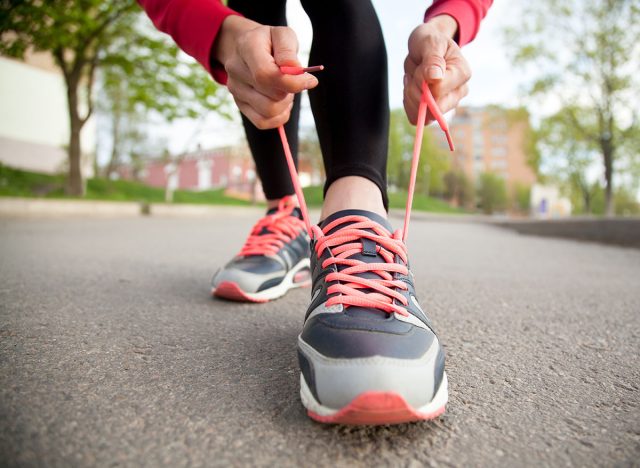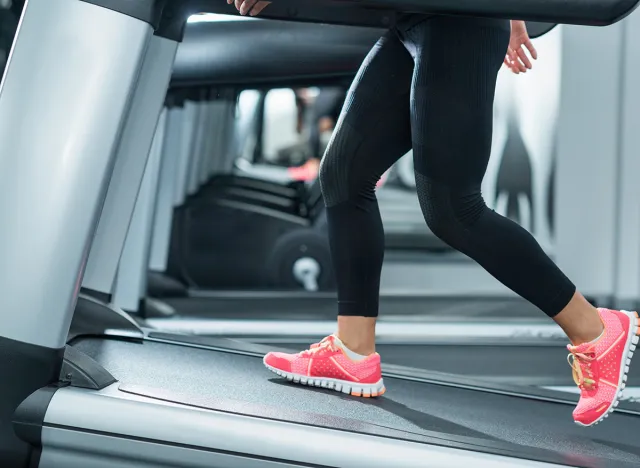Everything You Need to Know About 12-3-30, the Walking Workout That Helps People Lose Weight Fast
So, you want to lose weight fast – without having to pay a personal trainer or sign up for a class? One of the most popular workouts for weight loss doesn't require a gym membership or an expensive fitness pass. In fact, all you need is a treadmill and a pair of sneakers. The 12-3-30 workout has millions upon millions of views on TikTok for a reason – it works. Here is everything you need to know about the 12-3-30 treadmill workout.
Lauren Giraldo Created the 12-3-30 Workout

When she was 24, Lauren Giraldo made the 12-3-30 treadmill workout go viral. It involves setting the treadmill to a 12% incline and walking at 3 miles per hour for 30 minutes. She first shared the treadmill routine in a 2019 YouTube video, uploading it to Instagram and TikTok in 2020, where it went viral. In the clips she claimed that it helped her lose 30 pounds.
RELATED: 15 Quick Ways to Lose Body Fat Percentage in a Week
She Was Intimidated By the Gym

"I used to be so intimidated by the gym, and it wasn't motivating," Giraldo explained in a 37-second TikTok video. "But now I go, I do this one thing, and I can feel good about myself."
She Calls It a "Game Changer"
"Game changer honestly. Have you tried my treadmill routine?" she captioned another post.
She Struggled to Run

Giraldo explains that her struggle to run on the treadmill let her to seek an alternative. "I'm not a runner, and running on the treadmill was not working for me," she told TODAY.com. "I started playing around with the settings, and at the time, my gym's treadmill had 12 incline as the max. The three miles per hour felt right, like walking, and my grandma had always told me that 30 minutes of exercise a day was all you needed. That's how the combination started."
Most Fitness Experts Are On Board with the 12-3-30

While some viral workouts aren't exactly endorsed by fitness experts, there is little controversy surrounding the 12-3-30. In fact, there is scientific evidence supporting it.
Walking Slower on an Incline Burns More Calories Than Running on a Flat Surface

Walking on an incline burns more calories than walking fast or even running on a flat surface, which is why many experts suggest upping your incline. A 2013 study even found that walking on a 2 to 7 percent incline increased heart rate by almost 10 percent when compared with running on a flat surface.
Our Resident RDN Also Agrees

"Walking is an excellent way to get started in exercise," agrees Body Network's Resident RDN, The Diet Diva, Tara Collingwood, MS, RDN, CSSD, LD/N, ACSM-CPT, a Board Certified Sports Dietitian and a co-author of the Flat Belly Cookbook for Dummies. If you don't want to jog/run, elevating the incline on the treadmill is a great way to get your heart rate higher, she adds.
RELATED: The Ultimate Guide to Getting Fit as a Pear Body Type
You Might Want to Start at a Lower Incline, She Says

"However, be careful with how much and how long you do the incline. Start with just a few degrees for a few minutes. Bring it back down for a few minutes and raise it again, repeating several times in interval style. I have seen people get injured by doing too much incline too quickly and not letting their body acclimate to it."
💪🔥Body Booster: You don't have to start with 30 minutes. Try doing a 12-3-15 instead.





